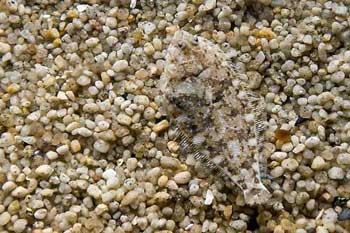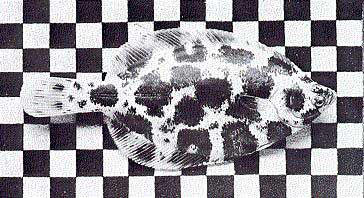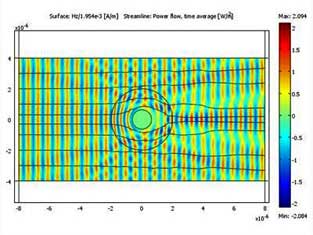|
Newsletter: Disappearing
by
Robert Piccioni
March 12, 2011
Ever
dream you could leave all your worries behind and just disappear?
Wouldn’t it be great if someone made a real cloaking device like the
Romulans in Star Trek?
Well, one day these fantasies may come true—or at least, partially so.
Scientists around the world are working to develop cloaking devices,
and they are making some progress.
Cloaking devices are part of a larger field—stealth technologies, all
of which strive to make an object “invisible” by making it “look” like
its surroundings. Every way we “look” at things involves sensing
electromagnetic (EM) waves—visible light, infrared, radar, etc. Thus,
we “see” objects only if they emit or reflect EM waves differently than
their surroundings.
The simplest stealth technology is passive camouflage: having a fixed
color or pattern that matches the environment. Active camouflage is
being able to dynamically change one’s appearance to match a changing
environment, and one of its greatest masters is the flounder.
The first image, by “Moondigger”, shows a flounder blending with
pebbles on the sea floor.

The
second image is even more spectacular; a flounder placed over a
checkerboard at Chicago’s Field Museum mimics the pattern of black and
white squares.

Most people know about the very successful stealth aircraft flown by
the U.S. Air Force in Desert Storm. Since the sky does not reflect
radar and conventional aircraft do, a plane designed to not reflect
radar looks like empty sky—it’s invisible to radar. But this highlights
a limitation of most stealth technologies. A stealth plane is invisible
to radar reflecting backward, but can be detected by side-scattered
radar waves and can be seen with visible light. These planes are
partially invisible.
Most of us don’t worry about being detected by radar (unless we’re
driving too fast); we are more interested in being unseen in visible
light. How’s that coming?
Well, visible light cloaking devices are not available at Costco yet.
Scientists have made cloaks from metamaterials, but these are
affordable only for hiding microscopic objects, and then only at
certain wavelengths of light and only if one looks head-on. The basic
idea is to bend light around the object, such that an observer sees the
same light whether the cloaked object is there or not. Again, the
object is invisible only at certain wavelengths and from certain
directions. A schematic, by V. Shalaev of Purdue, is shown below.

The latest and best results, published this January and February, use
calcite crystals as prisms to cloak objects up to 2mm across, about the
size of a small ant.
It may be many years before we can use cloaking to make those extra
holiday pounds disappear.
Best Regards,
Robert
* * * * * * * * *
* * * * * * * * * * * * * * * * * * * * * * * * * * *
* * * * * * * * * * * * * * * *
Dr Robert
Piccioni,
Author of "Everyone's
Guide to Atoms, Einstein, and the Universe"
and "
Can Life Be
Merely An Accident?"

|
|